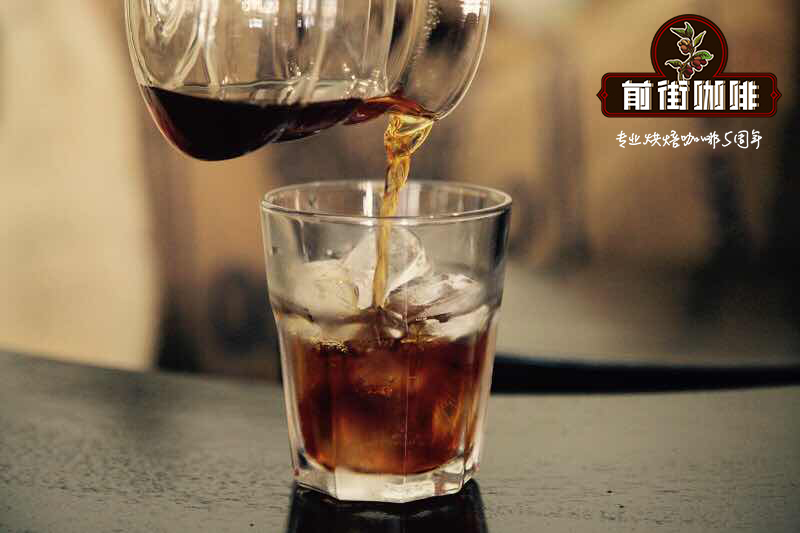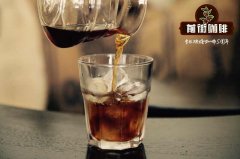Brazilian Fazenda Colina Manor Coffee Flavor characteristics Brazilian Coffee taste

Professional coffee knowledge exchange more coffee bean information please follow the coffee workshop (Wechat official account cafe_style)
Fazenda Colina
Mr. Hudson Vilela has many years of experience in agriculture and has developed a vision of growing specialty coffee in Brazil. He likes to work with his sons and incorporate them into his plan. In 1999, Hudson Villilla bought Fazenda Corina (Fazenda Colina) and began his coffee growing career.
The Vera family is the steward of nature. In the compound Fazenda Colina, 30% are in a protected state. When you visit the farm, you will find some springs, waterfalls, and a balanced mixture of nature and coffee trees.
Harvesting is done through advanced machines, while cherries that cannot be automated are picked by hand. Cherries are separated by density and processed into natural cherries and pulp cherries.
The natural coffee is sorted and sent directly to the terrace. Once there, they lie in the sun for 12 days, reaching a target humidity of 12%. In some cases, cherries dry in the patio for 3 to 5 days until 18%. These cherries have to stay in the mechanical dryer for another 3 days, so that they can provide a lower constant temperature.
The pulping of natural coffee uses the most common method in Brazil: pulping without fermentation. The mucus is partially removed and taken to the terrace. Employees turn the fruit regularly (called "fruit rolling"). All cherries, whether natural or naturally processed, are checked by regular humidity measurements.
The Vera couple's hard work is reflected in many awards that Fazenda Corinne has won over the years:
-won the seventh place in the 2015 COCCAMIG contest
-fourth place in 2016 MINASUL quality Competition-Naturals
First place in 2017 Minasul quality Competition-Naturals
The seventh place in the 2018 Minasul quality Competition-Naturals
Fourth place in the 2018 finals
Technical information
Regional Fazenda Colina
Variety Catucai, Icatu Acaia
Altitude 1090-1250 masl.
To deal with natural, crude nature.
Flavor description
Chocolate
Almond kernel
Nuts
END
Important Notice :
前街咖啡 FrontStreet Coffee has moved to new addredd:
FrontStreet Coffee Address: 315,Donghua East Road,GuangZhou
Tel:020 38364473
- Prev

Flavor characteristics of Costa Rican Vista Al Chirrip ó Manor Costa Rican coffee beans
For more information on coffee beans, please follow Coffee Workshop (Wechat official account cafe_style) Vista Al Chirrip Rivense del chpo is a micro-family factory founded by Regulo Urena and Isabel Rojas in 2005, located in the Brunca region of southern Costa Rica and settled in a micro area called chpo. It's Urena.
- Next

Columbia Cencoic Cooperative Coffee Taste characteristics Colombian coffee bean flavor
Professional coffee knowledge exchange more coffee bean information please follow Coffee Workshop (Wechat official account cafe_style) Cencoic Cooperative Valle de Cauca and the Nasa people Cauca Valley is a beautiful and diverse area located in southwestern Colombia. You will find that the coastal lowlands and mountains are covered with green carpets of tropical forests. The towering Cauca Mountains
Related
- Does Rose Summer choose Blue, Green or Red? Detailed explanation of Rose Summer Coffee plots and Classification in Panamanian Jade Manor
- What is the difference between the origin, producing area, processing plant, cooperative and manor of coffee beans?
- How fine does the espresso powder fit? how to grind the espresso?
- Sca coffee roasting degree color card coffee roasting degree 8 roasting color values what do you mean?
- The practice of lattes: how to make lattes at home
- Introduction to Indonesian Fine Coffee beans-- Java Coffee producing area of Indonesian Arabica Coffee
- How much will the flavor of light and medium roasted rose summer be expressed? What baking level is rose summer suitable for?
- Introduction to the characteristics of washing, sun-drying or wet-planing coffee commonly used in Mantenin, Indonesia
- Price characteristics of Arabica Coffee Bean Starbucks introduction to Manning Coffee Bean Taste producing area Variety Manor
- What is the authentic Yega flavor? What are the flavor characteristics of the really excellent Yejasuffi coffee beans?

